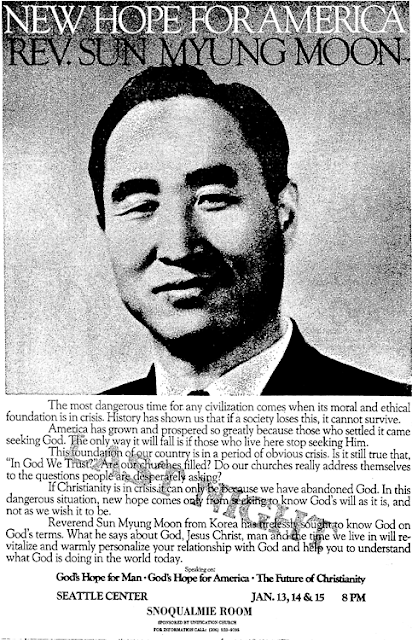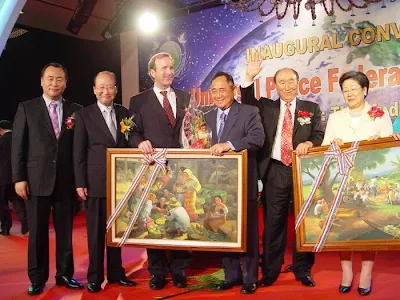Mae Brussels spent 12 hours a day piecing together history from small stories tucked in the back pages of newspapers. She looked at who was having lunch with whom, who was photographed with who, where were people employed and when, what companies were connected to what societies and so on and so forth. We owe her such a debt of gratitude for piecing together who the power elite's executive class are.
This series of three broadcasts is as usual densely packed with information that will overwhelm many but the seasoned researcher will start to see familiar patterns that emerge over and over again. It''s very satisfying to move from the world of theory and conjecture to one of growing certainty. In this respect it is me who claims Bush is involved with Reagan's assassination attempt because of additional information that has come to light since Mae's passing away.
Once again Poppy Bush is the greatest criminal mind ever. Period.
Conspiracy Theories: The Shooting Of Ronald Reagan
On March 30, 1981, a deranged young man attempted to assassinate U.S. President Ronald Reagan. Just another gun nut, acting on his own? Or was there something more to Reagan’s shooting?
The official story is that John Hinckley Jr, then 25 years old, shot Reagan as the President walked to his limousine after delivering a speech at a Washington, D.C. hotel. Hinckley fired several shots, one of them ricocheting off the limousine and hitting Reagan in the chest. Reagan was wounded but made a quick recovery, with the would-be-killer sent to an institution for the criminally insane. Hinckley claimed he attempted to kill the President to get the attention of actress Jodie Foster, who Hinckley was obsessed with.
But some have suggested Hinckley could have been a mind-controlled fall guy for the CIA. The Agency, conspiracy theorists suggest, wanted their former boss—and Reagan’s own Vice-President—George Herbert Walker Bush, father of the current President, George W. Bush—in the White House instead of the “The Gipper,” as Reagan was fondly known to many.
George Bush worked in an official capacity for the CIA as its Director in 1976-77, but Bush’s association with the Agency stretches back long before that time.
Bush, like his son, was and is a member of the ultra-secretive Skull and Bones Society of Yale. What is known about this Society is that its initiation rituals for new members involve lying naked in a coffin and providing fellow members information they could use for blackmail against them, ensuring their loyalty to the creepy but powerful club. It is also known that Skull and Bones tends to be a place where the equally-creepy CIA recruits many of its high-ranking members.
There is evidence to suggest Bush worked for the CIA as early as 1961. Bush, then a wealthy Texas oilman in his late 30s, visited oil rigs around the world. Was this the perfect cover for a CIA spy? Bush’s oil company was named Zapata—also the codename for the CIA’s ill-fated Bay of Pigs invasion of Castro’s Cuba in 1961. Two of the U.S. Navy ships that were repainted to look like civilian ships for the invasion were named “Barbara” and “Houston,” the name of Bush’s wife and adopted hometown.
The U.S. government released 100,000 pages of old documents related to the President John F. Kennedy assassination in 1978. A memo in that mountain of information was sent by the State Department to “George Bush of the Central Intelligence Agency.” The memo wrote of the possibility of another attempted invasion of Cuba following JFK’s death in 1963. Conspiracy buffs point to this as another link in the chain of Bush’s involvement with the CIA long before he was officially the Agency’s Director.
“Must have been another George Bush,” a Bush presidential campaign team member lamely replied when questioned about this in 1980.
There was indeed a George William Bush who worked for the CIA, but only for a few months as a low-ranking office worker in 1964. When tracked down by an investigative journalist about the memo, the former Agency employee replied he was never consulted in any way by the State Department , the FBI or any other government body regarding an invasion of Cuba. “You must mean President Bush,” he said.
George de Mohrenschildt, a Russian-born wealthy Texas oilman who had links to alleged JFK assassin Lee Harvey Oswald, was called to appear before the House Select Committee on Assassinations in 1978 regarding the JFK killing and his ties to Oswald.
The oilman never made it.
He was found dead after an apparent suicide (?), and in his personal address book investigators found the name “Bush, George H. W. 1412 W. Ohio also Zapata Petroleum Midland.”
To return to the Reagan shooting, could it be that the CIA, with whom George Bush may have had a close association long before becoming its Director, wanted their man—Vice-President George Bush-- in the White House instead of Reagan and used the pathetic Hinckley to do the job? The CIA, conspiracy theorists claim, played a part in the assassination of Kennedy and the removal of Nixon from the White House, so why not try it again?
Consider this.
John Hinckley had flown from Nebraska to Nashville in October 1980 with plans to assassinate President Jimmy Carter, but Nashville airport officials detained him when it was found he had three guns in his luggage. Amazingly, he was released with a fine after a mere five hours in detention, in a city where President Carter was expected. Hinckley also had links with the American Nazi Party and the Islamic Guerilla Army. A member of the latter group apparently warned the Secret Service of Hinckley’s plan to shoot Reagan two months before the shooting, but did nothing about it.
Even more amazingly, the Bush and Hinckley families were old friends. Both families had made a fortune in the Texas oil industry. Bush’s son Neil even had plans to meet with Hinckley’s brother Scott the same evening Reagan was shot.
Was the CIA indeed behind the Reagan shooting?
If so, did George Bush know about it?
Or was the shooting the actions of one violent, mentally-ill young man, who was willing to do anything to get Jodie Foster’s attention?
Ironically, if any ‘good’ came out of the shooting, it was for Jodie Foster.
The unwanted publicity she received as a result of Hinckley’s actions doubtlessly helped her career, and on March 30, 1991, ten years to the day after the Reagan shooting, Foster won the Academy Award for Best Actress for her role as a government agent in “The Silence Of The Lambs.”



















